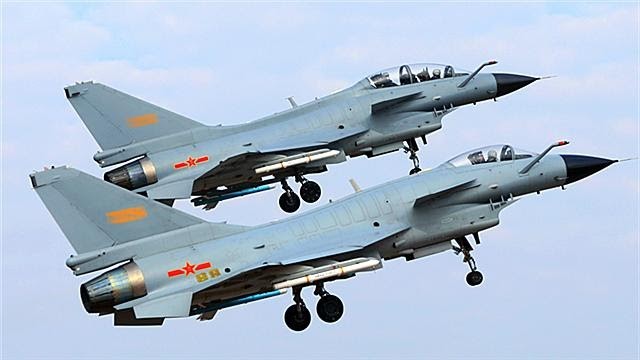So much is happening in China’s military development programs and foreign affairs that analysts in Washington are no longer making “what if” arguments but have moved the discourse toward debating about “when.” Concern in the democratic West extends across a wide swath of threats from Chinese surveillance balloons over sovereign US territory to military weapons deals supporting Russian aggression in Ukraine that could lead to regional war across Europe. China today possesses a military shipbuilding industry that outpaces America’s. From submarines to satellites China is designing a military, in concert with Xi Jinping’s aggressive foreign policy, that is recalcitrant to nations urging Beijing to behave as a responsible partner in the international rules-based system.
This week Chinese researchers revealed that Beijing plans to deploy almost 13,000 satellites in low-orbits, under the project code “GW.” The system, when in place, will be capable of spying on rival networks such as Starlink and carry out anti-Starlink missions. Professor Xu Can, of the People’s Liberation Army (PLA) Space Engineering University in Beijing, cited the development in a paper published in February in the Chinese journal Command Control and Simulation. The plan calls for it to launch satellites in the near future before Elon Musk launches his planned network of 12,000 satellites in 2027. Starlink satellites can receive data from DOD to coordinate positions and they are equipped with monitors to watch the space environment, according to the Chinese paper. The researchers suggest that this requires China to build a more powerful system to identify, track and, using new weapons, be capable of destroying Starlink. It notes that China’s system will include lasers and high-power microwaves.
From the stars to the bottom of the seas, Xi Jinping is overseeing a military development program that is destabilizing the world and threatening the democratic peace. This week HI Sutton, in Naval News, reported that China’s XLUUV (extra-large underwater drone) design, which is similar the US Navy’s Boing Orca, will have advanced weapons on board beyond what the Orca can provide today. Sutton points out that while the US Navy is in the lead in experimentation and orders, China’s XLUUV represents a “significant leap” in technology and will be armed with four torpedo tubes. It not only represents a capability lacking in the Orca, China has at least four additional designs already being tested in the water. Images release by Chinese shipbuilding organization CSSC 705 Institute indicate the underwater drone is built for export, too. It is the first to include specialized sonar with the torpedo tubes. When operational it will need to be autonomous and, as such, represents an increased risk of blue water accidents.
In a recent meeting in Moscow, China’s Foreign Minister, Wang Yi, is quoted China-Russia relations remain “mature, resilient and stable” after being test by “international storms.” Although the two communist states are allied in some areas, there also is a quiet but competitive environment between the two in Central Asia. China is beginning to expand its “private security companies” (PSC’s) in the region in support of its Belt and Road Initiative (BRI). They are, however, de facto armies. Analysts point to Tajikistan and Kyrgyzstan as the two countries most likely to receive the security forces, according to Sergey Suhankin of the Jamestown Foundation. Today, he says, the PSCs’ should be viewed as being more of a “continuation of business by other means” rather than military-political tools or instruments of geopolitical competition. China faces negative sentiment in region due to its anti-Muslim policies. The PSC’s offer a two-prong advantage for Beijing. They will be on the ground to restrain Sinophobia and quell and anti-China demonstrations or activities. Second, and perhaps more significant, is that these officially “non-official” forces will be acquiring real world experience that could be used in other theaters of operation. China’s soft power approach could quickly transform into a hard power conflict. Suhankin points out in a February 22 article that “The strategic importance of the region is highlighted not only by the attention given to it by Chinese government agencies but also by the existence of more than 30 large research institutions—including those under the umbrella of China’s largest and most reputable universities—specifically tasked with researching and monitoring developments in Central Asia.” The pattern is clear. No matter where one turns, China is on the move and becoming increasingly aggressive in its policies. Chinese war planners are trained to examine the battlefield as Sun Tzu described long ago. He wrote that an army must climb high to see farther down the road. China’s allocation of resources to programs that are offensive in nature points to a road filled with conflict if the West does acknowledge what is occurring today.
Daria Novak served in the U.S. State Dept.
Photo: China Defence Ministry
